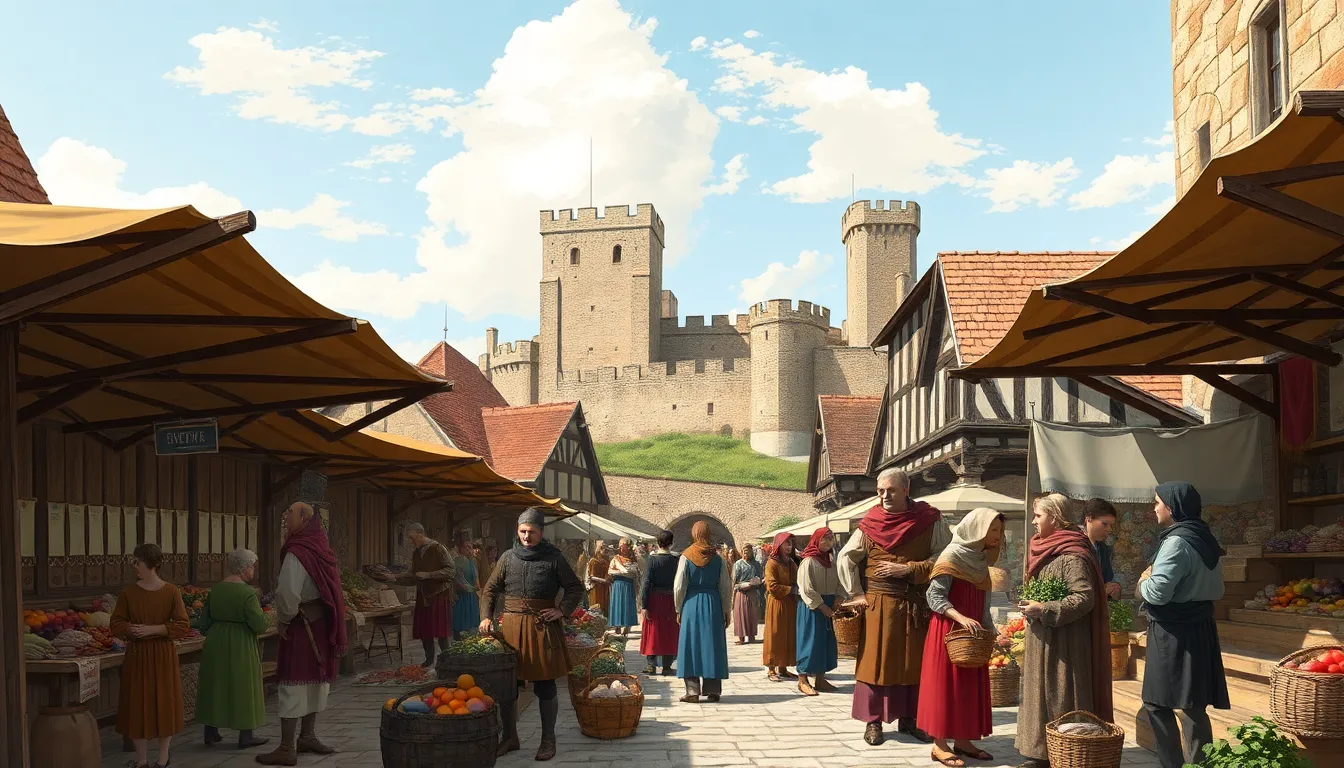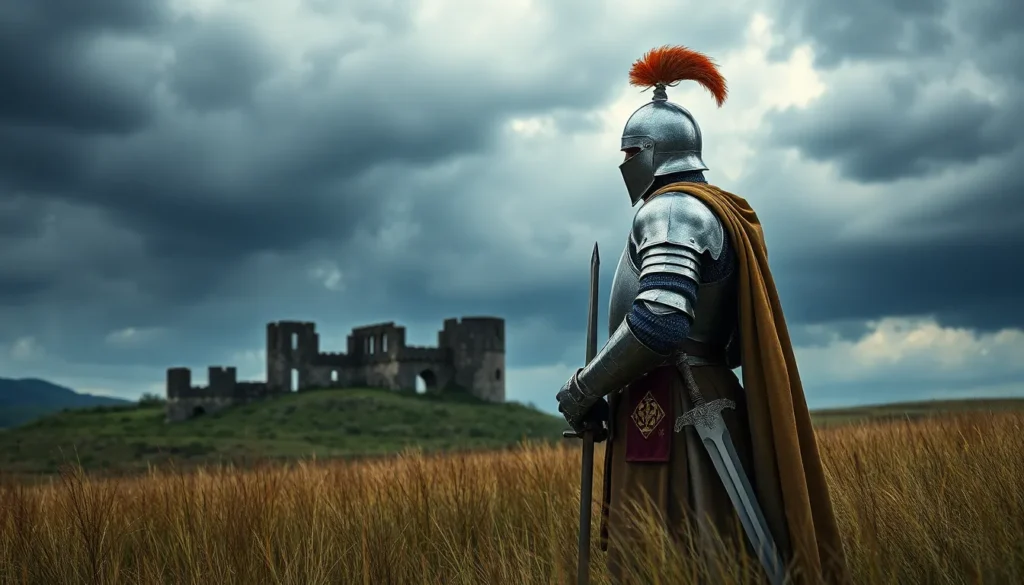Table of Contents
ToggleThe 14th century might sound like a distant echo from the past, but it’s a treasure trove of history just waiting to be uncovered. Spanning from 1301 to 1400, this century was anything but boring. Picture knights in shining armor, plagues that made headlines, and art that would make even modern-day critics raise an eyebrow.
Overview of the 14th Century
The 14th century spanned from 1301 to 1400, serving as a transformative period in European history. Significant political changes occurred, marked by the rise of powerful monarchies and the decline of feudalism. Political events, like the Hundred Years’ War, began in 1337, impacting England and France.
Economic turmoil affected this century, with famine and inflation influencing daily life. The Great Famine of 1315-1317 devastated crops in Northern Europe, causing food shortages and societal strain.
Culturally, the 14th century witnessed a flourishing of art and literature. Works by authors such as Geoffrey Chaucer emerged, reflecting the complexities of medieval life. Artists inspired by religious themes established the foundation for the Renaissance.
Plagues significantly shaped the demographic landscape. The Black Death, arriving in the late 1340s, decimated populations across Europe, leading to profound social and economic shifts. It’s estimated that the plague wiped out 30-50% of Europe’s population.
Religiously, various movements gained momentum during this century. The Catholic Church faced challenges, including criticism of its practices and calls for reform. This questioning set the stage for future religious transformations.
Scholarly pursuits also expanded. Universities formed in major cities, including Paris and Oxford, promoting education and fostering intellectual development. This pursuit of knowledge contributed to advancements in philosophy and science.
The 14th century laid crucial groundwork for subsequent historical developments. Events, cultural outputs, and societal challenges during this period continue to influence discussions on European history.
Historical Context

The 14th century represented a pivotal period in European history, witnessing transformative changes from 1301 to 1400. Its events and cultural developments significantly shaped the future.
Transition from the 13th to the 14th Century
During this transition, the 13th century laid the groundwork for the rise of centralized monarchies throughout Europe. Feudalism began to wane as monarchs consolidated power, shifting political dynamics. Additionally, advancements in trade and commerce contributed to emerging economic changes, fostering urban growth. The establishment of universities during this time emphasized the pursuit of knowledge and the intellectual movements that would flourish later. Social structures experienced strain as these developments unfolded, setting the stage for challenges in the coming century.
Major Events of the 14th Century
Major events characterized the 14th century, notably the outbreak of the Black Death from 1347 to 1351, which decimated populations across Europe. The Hundred Years’ War began in 1337, pitting England against France in a protracted conflict that influenced territorial boundaries. The Great Famine from 1315 to 1317 led to widespread hunger and societal unrest, exacerbating existing tensions. Culturally, figures such as Geoffrey Chaucer emerged during this period, reflecting the complexities of everyday life. These events collectively contributed to shifts in power dynamics, social structures, and cultural expressions that shaped the trajectory of European history.
Cultural Developments
Cultural developments in the 14th century reflect transformative shifts in art, literature, and science, shaping future societies.
Art and Literature
Art and literature thrived during this century, laying the groundwork for the Renaissance. Notable figures emerged, such as Geoffrey Chaucer, whose work illustrated everyday life and social issues. Artists turned to realism, focusing on human experience. The use of oil paints gained popularity, enhancing depth and color in artwork. Themes of religion, nature, and human emotion dominated both painting and literature. The creation of illuminated manuscripts showcased intricate artistry, captivating audiences across Europe.
Scientific Advancements
Scientific advancements marked significant progress during the 14th century. Scholars began challenging traditional views, advocating for empirical observation and experimentation. An increased interest in natural philosophy spurred growth in fields like astronomy and medicine. Innovations took place in navigation, improving maritime exploration. Additionally, the establishment of universities paved the way for systematic study in various disciplines, advancing knowledge. Knowledge dissemination became easier with the rise of the printing press in the late century, which allowed ideas to spread more widely.
The 14th Century in Global Perspective
The 14th century witnessed significant transformations across various regions, each contributing uniquely to global history.
Europe
In Europe, the century marked profound socio-political changes. The rise of centralized monarchies shaped many nations. Monarchs consolidated power amidst widespread conflict, notably during the Hundred Years’ War from 1337. Economic struggles emerged, particularly from the Great Famine that devastated agriculture between 1315 and 1317. Populations faced staggering losses during the Black Death, which peaked in the late 1340s, significantly altering the demographic landscape. Artists and writers, such as Geoffrey Chaucer, responded to these upheavals, producing works that reflected the complexities of life during this tumultuous time. The period also ignited early Renaissance ideals, laying the groundwork for cultural advancements.
Asia and Africa
Asia and Africa experienced distinct developments within the 14th century. In Asia, the Mongol Empire began to fracture, leading to the establishment of regional powers. The rise of the Ming Dynasty in China marked a significant transition, emphasizing trade and cultural exchange along the Silk Road. Africa saw the flourishing of trade networks, particularly with the trans-Saharan trade, enhancing connections between North African empires and sub-Saharan regions. The spread of Islam continued to shape societies, influencing politics, education, and culture. In these regions, advancements in various fields, such as mathematics and astronomy, led to rich cultural exchanges that impacted global knowledge.
The 14th century stands as a pivotal chapter in history that shaped the course of Europe and beyond. Its blend of cultural achievements and profound societal shifts laid the foundation for the Renaissance and modernity. The interplay of art, science, and politics during this time reflects a world in transition. As monarchies rose and feudalism waned, the impact of events like the Black Death and the Hundred Years’ War reverberated through generations. The advancements in knowledge and exploration during this century not only enriched European life but also fostered connections across continents. The legacy of the 14th century continues to resonate today, inviting ongoing exploration and understanding of its complex narrative.







